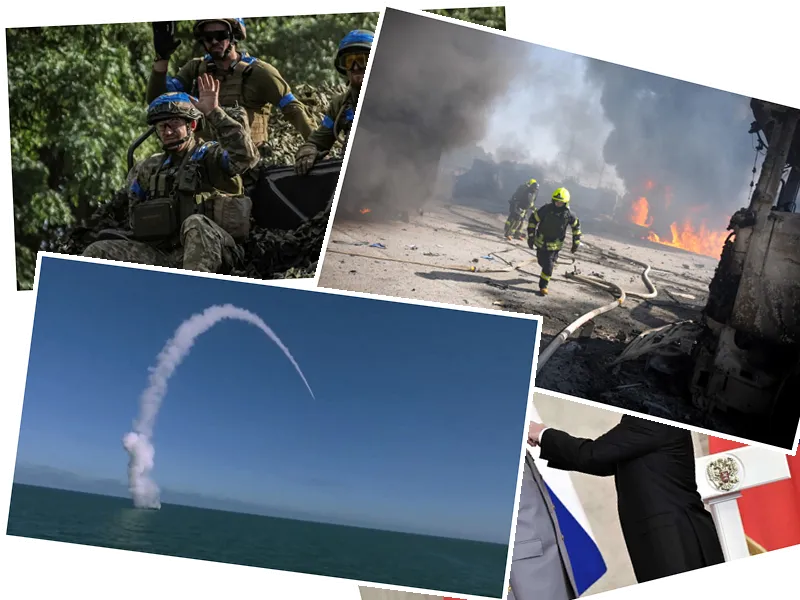Ukraine's Bold Offensive: A Historic Incursion into Russian Territory
In a significant escalation of the ongoing conflict, the Ukrainian army has made a bold move by launching an offensive into Russian territory, specifically the Kursk and Belgorod regions. This marks the first time since 1945 that Ukrainian forces have crossed into Russia, igniting a series of military maneuvers that have left both nations on high alert. Ukrainian President Volodymyr Zelensky stated that the operation is proceeding as planned, with Ukrainian troops reportedly controlling approximately 1,250 square kilometers and 93 settlements in the Kursk region. Despite facing setbacks in the Donbass, particularly after the fall of Avdiivka, Ukraine's strategic offensive aims to shift the focus of Russian forces away from the eastern front.
Russia's Retaliation: A Massive Attack on Ukrainian Infrastructure
In response to Ukraine's incursion, Russia launched a large-scale missile attack targeting critical energy infrastructure across Ukraine. The Russian Ministry of Defense confirmed that high-precision strikes were executed on vital facilities in about 15 cities, including Kyiv, Lviv, and Dnipro. This attack has left many regions without electricity and water, showcasing the devastating impact on civilian life. Reports indicate that this was one of the most intense assaults in the two-and-a-half-year conflict, with casualties reported in multiple regions, including the deaths of at least three civilians. The use of advanced weaponry, including hypersonic missiles and drones, underscores the escalating nature of this conflict.
The Broader Implications: Military and Political Dimensions
The recent developments in the Ukraine-Russia conflict carry significant military and political implications. Analysts suggest that Russia's aggressive response may be an attempt to regain control over the narrative following Ukraine's incursion. The Kremlin's search for accountability within its military ranks highlights the internal pressures facing President Putin as he navigates this precarious situation. Meanwhile, the potential for diplomatic negotiations appears to be diminishing, as both sides brace for further escalation. The involvement of external actors and the ongoing military buildup along the borders suggest that the conflict is far from resolution, with both nations preparing for a prolonged struggle.
- The Ukrainian offensive is seen as a tactical maneuver to distract Russian forces from their ongoing operations in the Donbass region. This strategy aims to alleviate pressure on Ukrainian troops in eastern Ukraine, where they have faced significant challenges. Colonel General Oleksandr Syrskyi of the Ukrainian army emphasized the effectiveness of the operation, stating that Ukrainian troops are gaining ground with minimal resistance. On the other hand, Russia's retaliatory strikes have raised concerns about the humanitarian impact of the conflict, particularly as civilian infrastructure continues to be targeted. The Russian government claims that the strikes are necessary to disrupt Ukraine's military capabilities, but the collateral damage to civilians and essential services has drawn international condemnation. As both sides prepare for potential escalation, the situation remains fluid, with the possibility of further military engagements and a continued focus on energy infrastructure as a critical battleground in this conflict.






